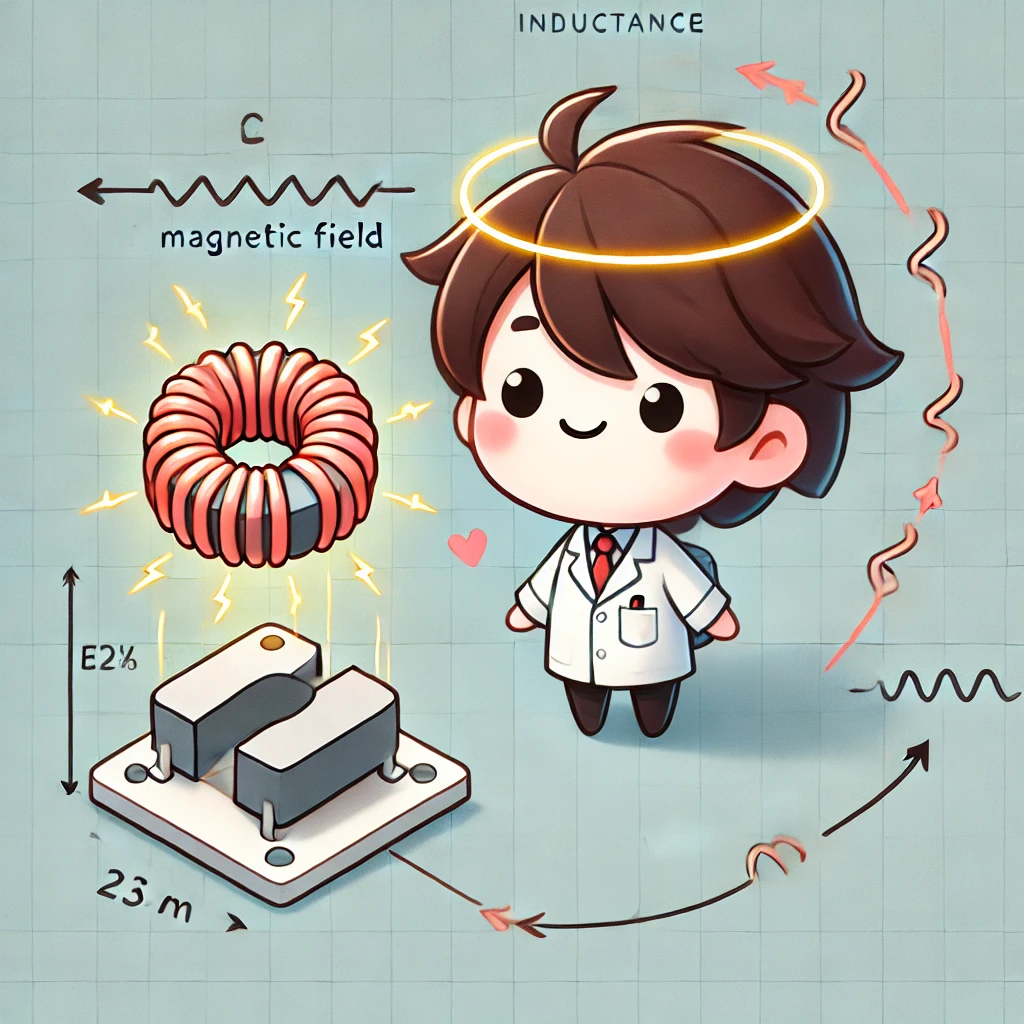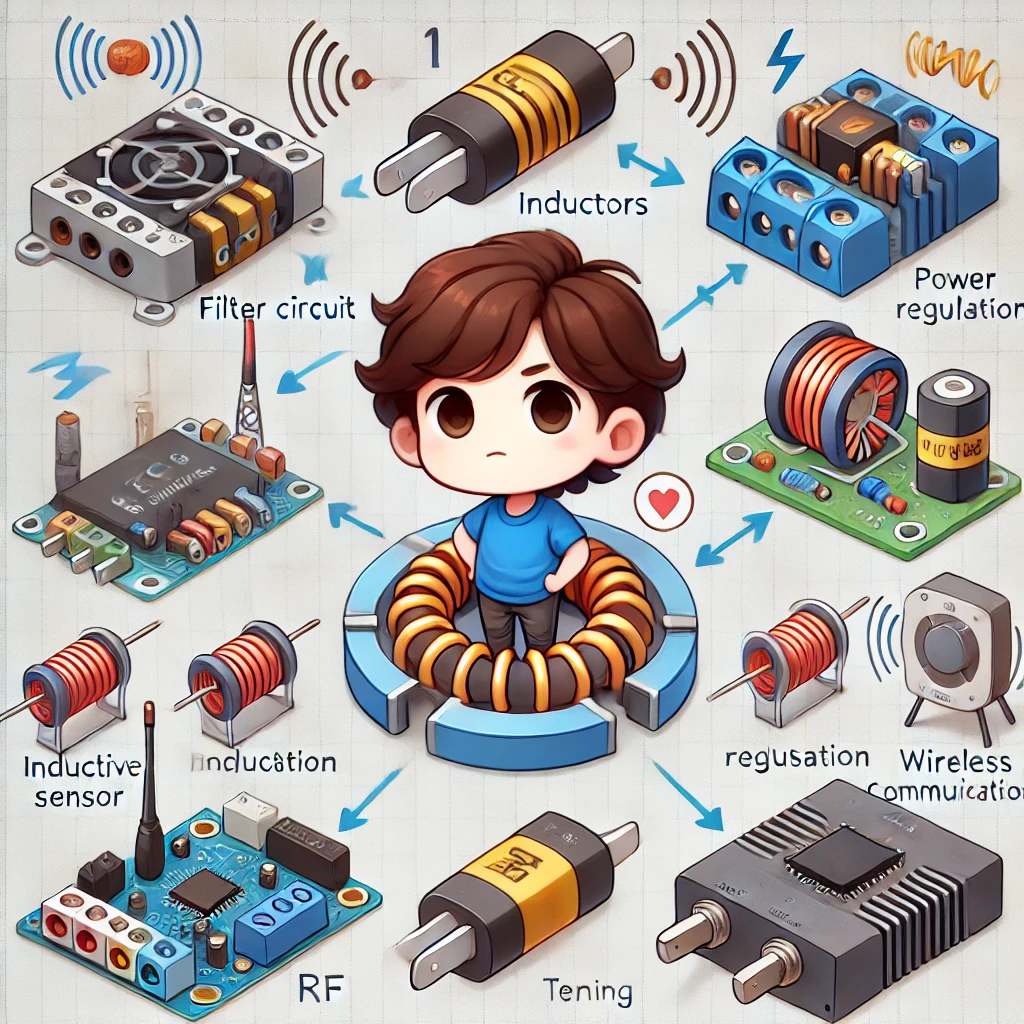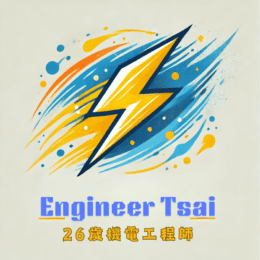Watch Now: What Is Inductance?
Discover how inductance works, how it shapes circuit behavior, and its key roles in power regulation, filtering, and wireless charging—all explained through clear demonstrations! ⚡
What is Inductance?
Inductance is a fundamental component in electrical circuits, playing a crucial role in power supply systems, signal processing, and wireless communication. It affects how current flows by resisting sudden changes and storing energy in the form of a magnetic field.
But how exactly does inductance work, and how does it impact circuits? This article explores the core principles of inductance, its applications, and its effects on electrical circuits.
Basic Principles of Inductance
An inductor is a component designed to store energy in a magnetic field, typically made of a coiled wire.
According to Faraday’s Law of Electromagnetic Induction, when current flows through the coil, it generates a surrounding magnetic field. When this current changes, the magnetic field also changes, inducing an electromotive force (EMF) in the wire that opposes the change in current—a phenomenon known as self-induction.
Key Characteristics of Inductance
🔹 Resisting Current Changes
Inductors oppose variations in current. When the current increases, the inductor generates a counteracting voltage; when the current decreases, it induces a voltage in the same direction, preventing abrupt changes.
🔹 Storing Magnetic Energy
Inductors act as energy storage components, accumulating energy in the magnetic field when current flows through them and releasing it back into the circuit when the current decreases.
Inductance Calculation & Unit
Inductance is measured in Henries (H), with practical values often expressed in millihenries (mH) or microhenries (µH).
The fundamental equation for inductance is:
V = L × (dI/dt)
Where:
- V = Induced voltage (Volts)
- L = Inductance (Henries)
- dI/dt = Rate of change of current (Amperes per second)
This equation indicates that the faster the current changes, the greater the induced voltage.

How Does Inductance Affect Circuits?
Inductance plays different roles in circuits, depending on the application. Here are some common ways it influences circuit performance:
1. Filtering Circuits
Inductors can block high-frequency signals while allowing low-frequency signals to pass, making them essential in power supplies and audio processing.
📌 Low-Pass Filter (LPF): Removes high-frequency noise, ensuring a stable DC power supply.
📌 High-Pass Filter (HPF): Used with capacitors to transmit high-frequency signals while filtering out low-frequency components.
2. Power Regulation
In switching power supplies (such as DC-DC converters), inductors store energy and regulate current flow, improving voltage stability.
📌 Boost Converter: Helps increase the output voltage.
📌 Buck Converter: Smooths current flow, reducing voltage fluctuations.
3. Inductive Sensors
Inductors are key components in many sensors, detecting objects and enabling wireless energy transfer.
📌 Metal Detectors: Use inductance to sense metallic objects.
📌 Wireless Charging: Creates an electromagnetic field that induces current in a receiving coil for wireless power transfer.
4. RF Circuits & Antennas
Inductors and capacitors form LC oscillating circuits, which help tune and transmit wireless signals.
📌 Radio Receivers & Transmitters: Adjust signal frequency for clear communication.
📌 RFID (Radio-Frequency Identification): Enables contactless data exchange in access cards and smart devices.
📌 Mobile & Wi-Fi Antennas: Enhance signal strength and stability in wireless communication.

Simple Experiment: Testing Inductor Characteristics
Understanding how inductors influence current can be demonstrated through a simple experiment.
Experiment 1: Observing the Effect of Inductance on Current Change
📌 Materials:
✔ Battery
✔ LED bulb
✔ 100mH inductor
✔ Switch
📌 Steps:
- Connect the battery, inductor, LED bulb, and switch in series.
- Quickly toggle the switch on and off while observing the LED’s brightness.
- Compare how the LED behaves with and without the inductor in the circuit.
🔎 Results & Analysis:
- The LED lights up more slowly when an inductor is in the circuit.
- This delay occurs because the inductor resists sudden changes in current, limiting how quickly the LED can reach full brightness.
Common Types of Inductors
Inductors come in different designs depending on their applications:
| Type | Main Features | Common Applications |
|---|---|---|
| Air-Core Inductor | No magnetic core, suited for high-frequency circuits | RF circuits, wireless communication |
| Iron-Core Inductor | Uses an iron core to strengthen the magnetic field and increase inductance | Transformers, filtering circuits |
| Wire-Wound Inductor | Coil wound around a magnetic core, handles higher currents | Power supply modules, audio circuits |
| SMD Inductor | Compact, surface-mounted for PCB integration | Mobile devices, power management |
Each type of inductor serves a specific role in modern electronics, from wireless communication to power regulation and signal filtering.

Conclusion & Further Reading
Inductors play a crucial role in circuits by storing energy, regulating current flow, filtering noise, and enhancing power efficiency. Their applications span across power supplies, wireless communication, and sensors. Understanding inductors helps in designing and optimizing electronic circuits effectively.
📌 Further Reading
🔹 《Current & Voltage for DIY Enthusiasts : Unlock the Basics》
Learn the fundamental relationship between voltage and current and how they impact circuit design.
🔹 《Capacitor Uses: How They Store and Release Energy》
Explore how capacitors and inductors complement each other in power supplies and filtering applications.
🔹 《How LC Oscillator Circuits Work?》 (Coming Soon)
A deep dive into LC circuits, their oscillation behavior, and their applications in wireless communication and signal processing.
🔹 《The Role of Inductors in Wireless Charging》 (Coming Soon)
Discover how inductors enable wireless charging technology and their function in coil-based power transfer.
💡 Got questions about inductors? Drop a comment below! Don’t forget to subscribe to our blog for the latest updates in electronics and circuit design! 🚀


